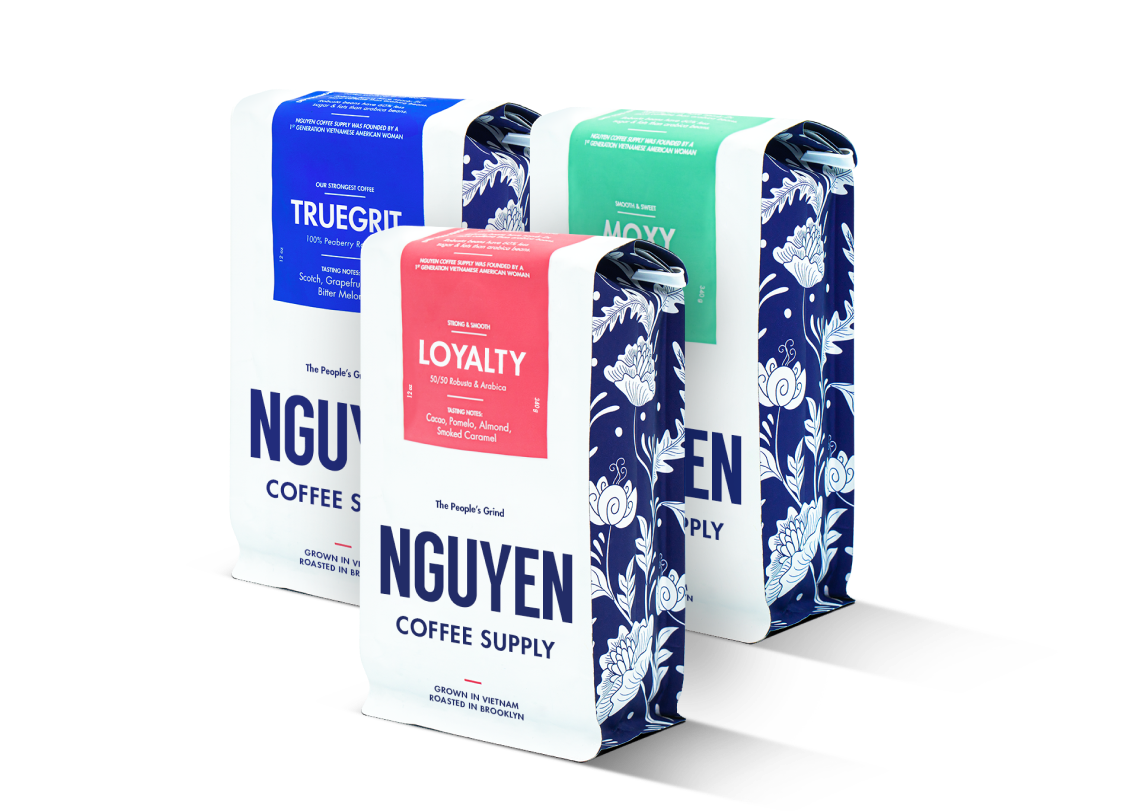

- FAN FAVORITE

Create for yourself or as a gift for your loved ones
Subscribe nowMe and mom just enjoyed the Nguyen phin drip experience. Wow. Proud of your work. We without hesitation enjoy the Vietnamese coffee and recommend your products. Thank-you to the Nguyen staff and tradition. From Canada eh!
Coffee has long been one of the most popular and commonly consumed beverages around the world. In fact, over two billion cups of coffee are consumed globally on a daily basis. With the rise of globalization and demands for daily commodities, coffee remains a universal essential for much of the population. Within this narrative, though, exists a schism.
For much of modern history, the conversation around coffee has been dominated by arabica coffee, the most widely consumed species of coffee around the world. To make matters murkier, a lack of transparency around coffee has resulted in consumer ignorance and miseducation. Coffee is not singular– in fact, there are many varieties and species of the plant grown around the world besides arabica.
Behind arabica coffee, robusta coffee is the second most widely consumed type of coffee globally and makes up about 40% of the global coffee industry. One may find this figure surprising given that virtually none of the conversation within the industry focuses on robusta.
Why is that?
To put it tersely, robusta coffee has been rendered invisible within the industry by large companies and given a bad reputation to gate keep the beans, its prices, and its producers.
Throughout the first, second, and third waves of coffee, robusta coffee has been present but never uplifted. When coffee was first made a mass market commercial product, robusta coffee was produced to meet demands given its relative ease of cultivation and scalability. This, however, rendered it as a cheap product. Additionally, the emphasis on quantity over quality resulted in many robusta farmers maximizing their outputs rather than optimizing their product quality, which in turn planted the seed for robusta to garner a reputation for being inferior to other kinds of coffee (namely arabica).
As coffee culture shifted to emphasize brew methods and origins, robusta coffee again was largely left out of the conversation. Industry leaders uplifted arabica coffee as a superior variety of coffee for its flavor, terroir, and complexity while reducing robusta coffee to something for the masses and less desirable. Through this framing, robusta coffee and its producers continued to suffer from a lack of transparency and visibility. Farmers could not create better products because there was no demand for it, and robusta coffee could not rise in price or popularity because it was pigeonholed into the mass commodity market.
For so long, robusta has been in the shadows, masked and supporting much of the global coffee supply chain without any recognition or care. Any attention it did receive tended to be negative and biased.
In today’s coffee culture, things are changing. We are experiencing a collective shift from merely focusing on the origin of products to focusing on producers and people. With this shift, we are also experiencing the rise of robusta in the mainstream conversation and spotlight.
From coffee roasters placing emphasis on robusta coffee and its origins to farmers developing specialty varieties of robusta coffee, the culture is shifting to be more inclusive and diverse. Some companies who have historically excluded or hidden robusta from its labeling are beginning to be transparent with their product labeling (perhaps for the optics).
How did this happen?
Through the work of small roasters and new faces within the coffee industry, robusta is witnessing a new era. Champions of the robusta bean are loud and proud to uplift the second most widely consumed type of coffee to all and these actions trickle out. Publications such as The New York Times and The Times have dubbed 2022 the Year of Robusta, naming it as a rising trend in food and beverage. Outlets such as CBS Saturday Morning have spotlighted this rise as well and WGSN’s annual trend report predicts that robusta will only continue to rise in popularity and demand henceforth.
This shift in the image of robusta will only mean good things for the future. Producers of robusta will be able to diversify their crops and cultivate specialty varieties, earning more for themselves while ensuring the continued cultivation of their lands as robusta coffee is a more sustainable and resilient plant than arabica. As global coffee supplies face threats due to climate change, many producers around the world will pivot to robusta coffee production to meet growing global demands. Because Vietnam is the leading producer of robusta coffee in the world, it stands to become a leader in the global coffee conversation and will also likely steer the industry toward a more sustainable yet specialized path!
After decades of being maligned as an inferior coffee bean, robusta coffee is getting its overdue recognition and respect in the coffee world. Much of the world is finally waking up to robusta, but producers in Vietnam will tell you that it’s long been a coffee variety worth investing in and sharing. As we experience the rise of robusta, everyone wins– from the producers to the roasters to the consumers. This is only the beginning; you heard it here first!
––